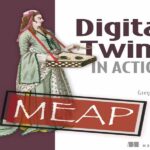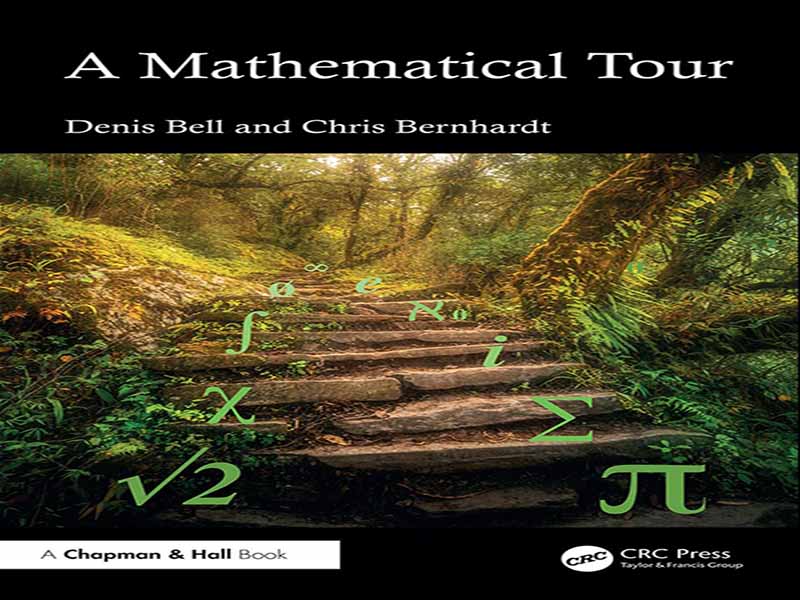- عنوان کتاب: A Mathematical Tour
- نویسنده: Denis Bell Chris Bernhardt
- سال انتشار: 2025
- حوزه: مبانی ریاضیات
- تعداد صفحه: 483
- زبان اصلی: انگلیسی
- نوع فایل: pdf
- حجم فایل: 11.0 مگابایت
ریاضیدان مشهور قرن بیستم، پاول اردوش، از «کتاب» سخن گفت، کتابی قطور که در بهشت وجود دارد و خداوند ظریفترین قضایای ریاضی را در آن گردآوری کرده است. موضوع زیبایی در ریاضیات به تفصیل در زندگینامه ریاضیدان برجسته آکسفورد، جی. اچ. هاردی، که در سال ۱۹۴۰ با عنوان «دفاعیه یک ریاضیدان» منتشر شد، شرح داده شده است. هاردی معتقد بود که فقط ریاضیات زیبا حق وجود دارد و علاوه بر این، ریاضیاتی که در این دسته قرار میگیرد، تقریباً منحصراً از نوع «خالص» است، به خاطر خودش وجود دارد و فاقد هرگونه کاربرد در دنیای واقعی است.1 هاردی آنچه را که بهترین اثباتهای ریاضی میداند، چیزی شبیه به موسیقی و شعر عالی توصیف میکند که ترکیبی ظاهراً متناقض از اجتنابناپذیری و غافلگیری را به نمایش میگذارد. او به عنوان نمونه، اثبات اقلیدس در مورد نامتناهی بودن اعداد اول و اثبات فیثائوریان در مورد گنگ بودن √۲ را ذکر میکند. علیرغم هاردی، ریاضیات امروزه هم به دلیل ویژگیهای مرموزش و هم به عنوان ابزاری که نقش اساسی در خلق دنیای مدرن داشته، ارزشمند است. از این منظر، این رشته به عنوان یکی از باشکوهترین آفریدههای ذهن بشر به نظر میرسد. اما ریاضیات یک بُعد انسانی نیز دارد. مردان و زنانی که این مجموعه عظیم از آثار را خلق کردهاند، دقیقاً همین بودند، زن و مرد. آنها زن، شوهر، فرزند داشتند، یا در بعضی موارد، نداشتند. آنها قمارباز، زنباره، قاضی، روحانی، سرباز، شاعر، نویسنده و عیاش بودند. آنها رنج کشیدند، پیروز شدند، گرسنگی کشیدند، نظر اشراف را به خود جلب کردند، گاهی اوقات بر یکدیگر برتری داشتند، برخی حتی کشته شدند. هدف این کتاب ارائه ریاضیات در هر دو جنبه انسانی و علمی آن است، اگرچه ما به عنوان ریاضیدان و نه مورخ، تمرکز خود را عمدتاً بر جنبه علمی آن قرار دادهایم. خب، به تور ما خوش آمدید! واقعاً مناظر زیبایی وجود دارد. اگر زمین در بعضی جاها کمی صخرهای شد، نگران نباشید، فقط نزدیک بمانید و بگذارید ما راهنمای شما باشیم. چشمانداز به حوزههای موضوعی تقسیم میشود. دو فصل اول در مورد هندسه و نظریه اعداد است. فصل ۳، درباره ریاضیات قرون وسطی و رنسانس، ماهیتی انتقالی دارد و شکاف بین «ریاضیات قدیم» و اختراع بزرگترین ابزار این رشته، یعنی حساب دیفرانسیل و انتگرال، را پر میکند. فصل ۴ مربوط به جبر است که از طریق تاریخچه معادلات چندجملهای بیان میشود. فصل ۵ مقدمهای بر حساب دیفرانسیل و انتگرال به طور خاص، همراه با بحثهایی در مورد ایدهها و قضایای اصلی ارائه میدهد. فصل ۶ به بررسی متغیرهای مختلط، حساب توابع تعریفشده با استفاده از اعداد مختلط، میپردازد. فصل ۷ به نظریه گراف میپردازد، موضوعی که با راهحل اویلر برای مسئله پلهای کونیگزبرگ آغاز شد و به شاخهای اصلی از ریاضیات تبدیل شده است و کاربردهای فراوانی در حوزههای مختلف از اقتصاد گرفته تا شبکههای کامپیوتری دارد. فصل ۸ به احتمال میپردازد و سیر تکامل این موضوع را از ریشههای باستانی آن در قمار تا نقش آن به عنوان پایه و اساس آمار ریاضی دنبال میکند. در نهایت، فصل ۹ به موضوع بینهایت، منطق ریاضی و عناصر علم کامپیوتر میپردازد، از نظریه شمارشپذیری که توسط کانتور مطرح شد، تا کار انقلابی گودل در مورد گزارههای غیرقابل حل، و تا کار تورینگ در مورد ماشینهای محاسباتی و اعداد قابل محاسبه.
The famous twentieth century mathematician Paul Erdős spoke of “The Book,” a tome existing in heaven where God collects the most elegant mathematical theorems. The theme of beauty in mathematics is expounded at some length in the prominent Oxford mathematician G. H. Hardy’s autobiography of 1940, “A Mathematician’s Apology.” Hardy contended that only beautiful mathematics has a right to exist and, moreover, the mathematics that falls into this category is almost exclusively of the “pure” variety, existing for its own sake and devoid of any real-world applications.1 Hardy characterizes what he considers the best mathematical proofs as something akin to great music and poetry, exhibiting a seemingly paradoxical combination of inevitability and surprise. He cites as examples Euclid’s proof of the infinitude of the prime numbers and the Pythaoreans’ proof of the irrationality of √2. Hardy notwithstanding, mathematics is valued today both for its esoteric qualities and as a tool that has played a fundamental role in creating the modern world. Viewed in this way, the discipline appears as one of the most magnificent creations of the human mind. But mathematics also has a human dimension. The men and women who created this vast body of work were just that, men and women. They had wives, husbands, children, or in some cases, they didn’t. They were gamblers, philanderers, judges, clerics, soldiers, poets, writers, and rakes. They suffered, they triumphed, they starved, they courted the favor of nobles, they lorded it over each other at times, some were even killed. It is the purpose of this book is to present mathematics in both its humanistic and scientific aspects, although being mathematicians rather than historians, our focus is largely on the latter. So, welcome to our tour! There are indeed beautiful vistas. If the terrain gets a little rocky in places, don’t worry, just stay close and let us be your guide. The landscape is divided into subject areas. The first two chapters are on Geometry and Number Theory. Chapter 3, on Medieval and Renaissance Mathematics, is transitionary in nature, bridging the gap between “old mathematics” and the invention of the subject’s greatest tool, calculus. Chapter 4 concerns Algebra, told through the history of polynomial equations. Chapter 5 provides an introduction to Calculus proper, with discussions of the main ideas and theorems. Chapter 6 is an account of Complex Variables, the calculus of functions defined using complex numbers. Chapter 7 addresses Graph Theory, a subject that originated with Euler’s solution to the bridges of Königsberg problem, and which has grown into a major branch of mathematics, with numerous applications in areas ranging from economics to computer networks. Chapter 8 is concerned with Probability and traces the development of the subject from its ancient roots in gambling to its role as the foundation of mathematical statistics. Finally, Chapter 9 deals with the subject of the infinite, mathematical logic, and elements of computer science, from the theory of countability originated by Cantor, through Gödel’s revolutionary work on undecidable propositions, to Turing’s work on computing machines and computable numbers.
این کتاب را میتوانید از لینک زیر بصورت رایگان دانلود کنید:
Download: A Mathematical Tour



































نظرات کاربران